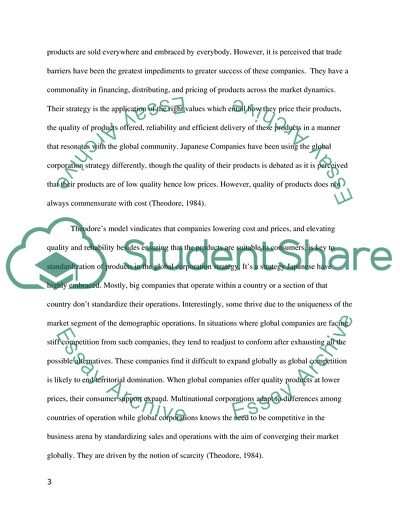Cite this document
(The Globalization of Markets Essay Example | Topics and Well Written Essays - 2250 words - 2, n.d.)
The Globalization of Markets Essay Example | Topics and Well Written Essays - 2250 words - 2. https://studentshare.org/marketing/1862346-the-globalization-of-markets-theodore-levitt
The Globalization of Markets Essay Example | Topics and Well Written Essays - 2250 words - 2. https://studentshare.org/marketing/1862346-the-globalization-of-markets-theodore-levitt
(The Globalization of Markets Essay Example | Topics and Well Written Essays - 2250 Words - 2)
The Globalization of Markets Essay Example | Topics and Well Written Essays - 2250 Words - 2. https://studentshare.org/marketing/1862346-the-globalization-of-markets-theodore-levitt.
The Globalization of Markets Essay Example | Topics and Well Written Essays - 2250 Words - 2. https://studentshare.org/marketing/1862346-the-globalization-of-markets-theodore-levitt.
“The Globalization of Markets Essay Example | Topics and Well Written Essays - 2250 Words - 2”. https://studentshare.org/marketing/1862346-the-globalization-of-markets-theodore-levitt.


